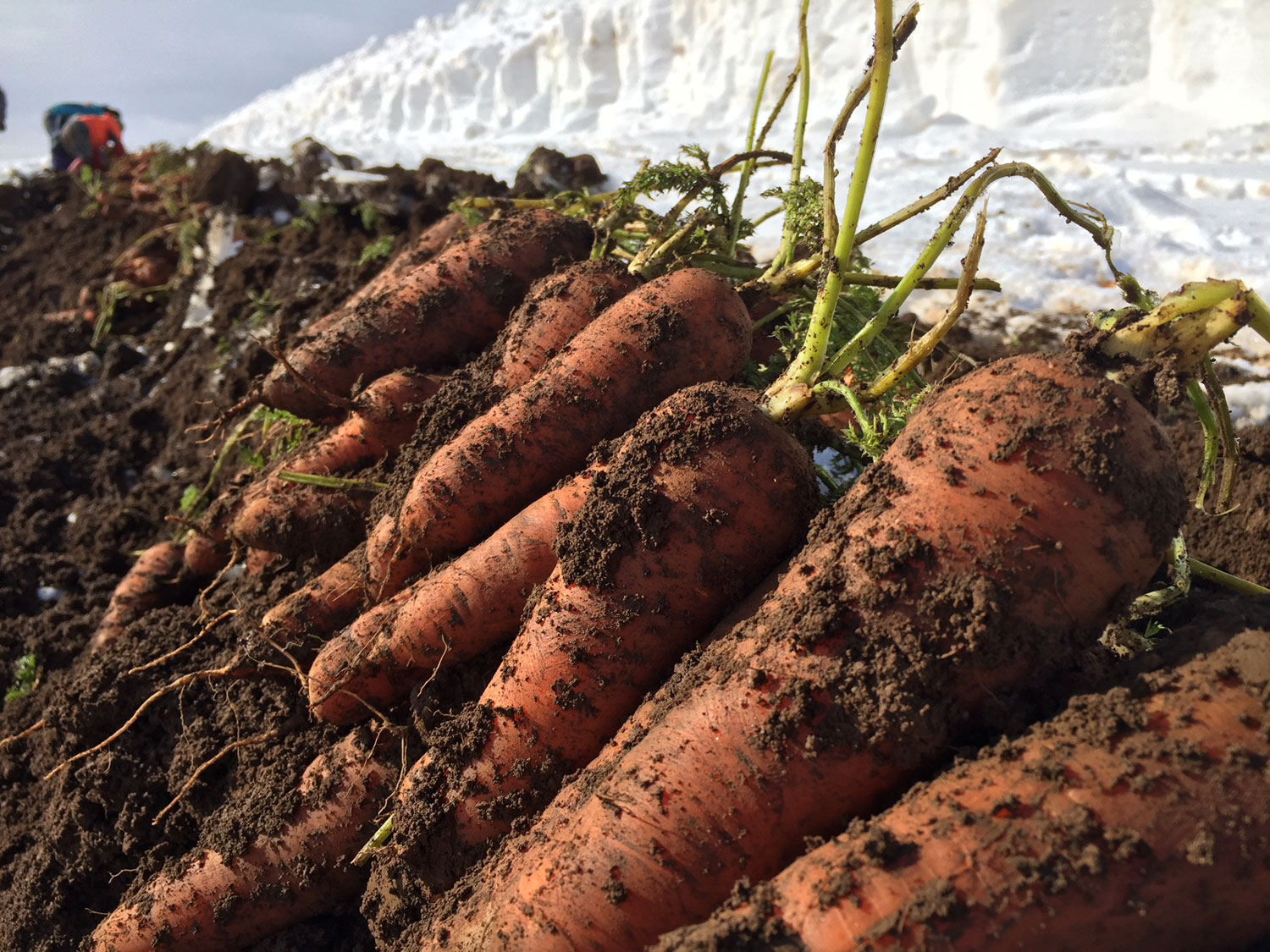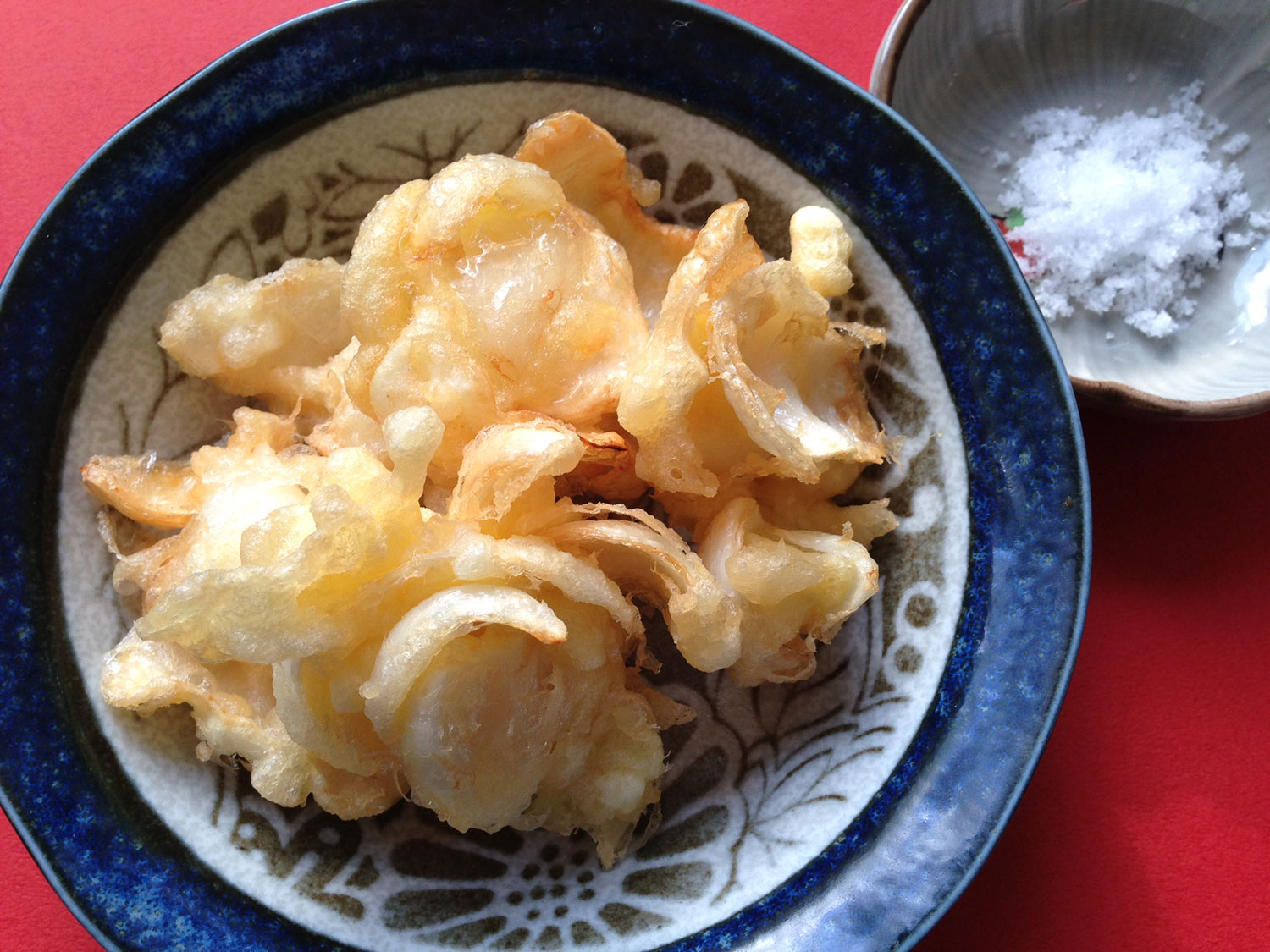



In Makkari Village, which is one of the Hokkaido's heaviest snowfall areas situated at the foot of Mt. Yotei, fallen snow gets accumulated as high as 2 meters or higher and covers the entire field in winter that enables us to have a unique cultivation method of carrots.
In regions with less snow and a deeper freezing depth, carrots freeze underground while growing. In Makkari, the snow covering over the ground keeps the soil unfrozen, so the crop can grow without freezing. The method also allows carrots to absorb the moisture from the snow and results in producing sweeter and juicier carrots than akibori (harvested in autumn) carrots.
The most distinctive feature of the yukishita carrot is its sweetness - the sugar content is about 2 degrees higher than ordinary carrots - and there is no unpleasant flavour unique to carrots that can be unpopular with children. Yukishita carrot can be said that it is most suitable for eaten raw, make great salad and veggie juice. Because the amount of production and shipping period are greatly influenced by the amount of snowfall in the year, it also has a high scarcity value.






Green asparagus is harvested from spring to early summer. Once you taste, you cannot stop eating our delicious, fresh and sweet green asparagus! The Vegetable Works pre-cools harvested asparagus in a large precooler and ships it on the day so that we can deliver the most fresh and tasty green asparagus compared to any other producers. Asparagus in season is a very popular gift bought in or sent from Hokkaido. Our asparagus is proudly introduced in the onboard gift catalogue of the Hokkaido Shinkansen bullet train.
Asparagus contains an abundant nutritional element called aspartic acid which is also contained in energy drinks and is remarkably effective for recovering from fatigue. Asparagus farmers who start to work energetically from early morning must be stimulated by their daily asparagus diet!
Asparagus should be wrapped with wet newspaper or the like so as not to get dry and stored vertically in the refrigerator. The freshness and flavour can also be kept in a special bag called P-plus which is often included in a gift package.



Hokkaido is the top broccoli production area in Japan. The Vegetable Works boasts a 60-hectare farm, our largest cultivating field, for the hallmark product. As broccolis quickly begin to wither at normal temperature once harvested, we store them in the precooler right after the harvest, have them thoroughly chilled, and put them in a box with ice to ship as fresh as possible.
Broccoli is such an outstanding vegetable in terms of nutritional value. Some of the contained nutrients - such as Vitamin C which is great for skin beautification, Vitamin B1 and B2 to help energy metabolism, and folic acid which has hemopoietic role - are the highest level in all the vegetables. It also has a high content of beta carotene and, naturally as related to cabbage, cabagin (Vitamin U) which supports digestion. In order not to miss those valuable nutrients, it is suggested that broccoli is boiled and cooled down before cutting up into pieces.
As a large-scale broccoli producer, the Vegetable Works assures a stable supply of the product even in summer when the yield tends to be unstable.



The variety of corn we cultivate in our farm is called Megumi. It belongs to sweet varieties, a group in which the produce contains a lot of sugar. Characteristics of Megumi, including the sweetness like fruits and soft skins on kernels, make it edible raw. With shiny bright lemon coloured kernels which are tightly and evenly aligned, Megumi is also a variety with such well-formed appearance.
At our home, we scrape raw kernels off as much as we want to preserve and put them in a zipped bag to freeze. In that way, they can be easily cooked afterwards in a stew, with butter, or in any way we like without losing a crunchy texture for a long time!




Do you know lily bulb? It is often seen in the traditional Japanese New Year's Osechi dish or as a winter vegetable in the supermarket. It is also an upper-class vegetable used in “ryotei” Japanese-style luxury restaurants as well as regular restaurants.
Lily bulb is not very a handy crop to cultivate for the farmers when considering that it takes 5 years from the first seedling to being put on the market, which means that the farmers get no proceeds for 4 years after seeding. After 5 years, however, when pure white bulbs peep out from the black soil, they are wonderfully grown reflecting to the years spent, provided with flavorous sweetness and soft texture. Makkari Village is the top lily bulb producing region in Japan. Our produce is honourably used at a historic Japanese confectionary store in Nara prefecture (Japan) where they make beautiful white sweets using lily bulb.
Lily bulb is in season in winter – why not try it once?



Hokkaido is the top potato producing region in Japan. In municipalities at the foot of Mt. Yotei where potato cultivation thrives, blooming flowers of potato can be seen all around in the fields in the flowering season of July.
In Japan, Danshaku imo (Baron potato or Irish Cobbler) and May Queen are considered to be the two greatest varieties of potatoes. The Vegetable Works produces Danshaku which is the most common variety in the country. The fruit is white and mealy with about 14-16% of starch value. When cooked, it delivers a flaky texture and a genuine flavour of potatoes. While it needs to be carefully cooked because of its crumbliness when boiled, the variety is suitable for baked and fried potatoes, korokke (croquettes), and potato salad. We put our best effort to grow the produce with reduced pesticide.